
The Maha Vir Chakra (MVC) is the second highest military decoration in India, after the Param Vir Chakra, and is awarded for acts of conspicuous gallantry in the presence of the enemy, whether on land, at sea or in the air. It replaced the British Distinguished Service Order (DSO). The medal may be awarded posthumously.
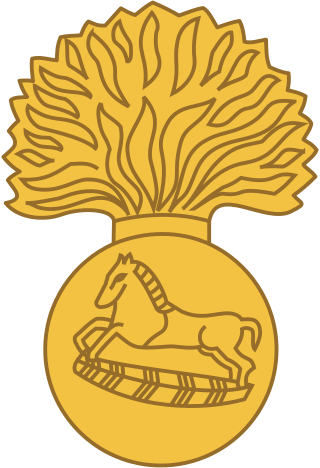
The Grenadiers is an infantry regiment of the Indian Army, formerly part of the Bombay Army and later the pre-independence British Indian Army, when the regiment was known as the 4th Bombay Grenadiers. It has distinguished itself during the two world wars and also since the Independence of India. The regiment has won many battle honours and gallantry awards, and is considered to be one of India's most decorated regiments with three Param Vir Chakra awardees in three different conflicts.
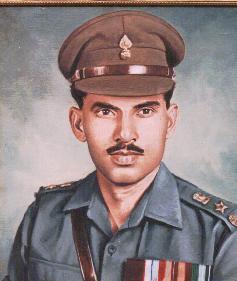
Colonel Hoshiar Singh Dahiya, PVC was an officer of the Indian Army who was awarded India's highest military honour, the Param Vir Chakra during Indo-Pakistani war of 1971.
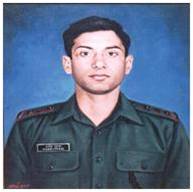
Captain Manoj Kumar Pandey, PVC was an officer of the Indian Army who was posthumously awarded India's highest military honour, the Param Vir Chakra, for his audacious courage and leadership during the Kargil War in 1999. An officer of the 1st battalion, 11 Gorkha Rifles, he sacrificed his life for the nation in battle on Jubar Top of the Khalubar Hills in Batalik Sector of Kargil.

Brigadier Maharaja Sawai Bhawani Singh MVC was an officer in the Indian Army and an entrepreneur.
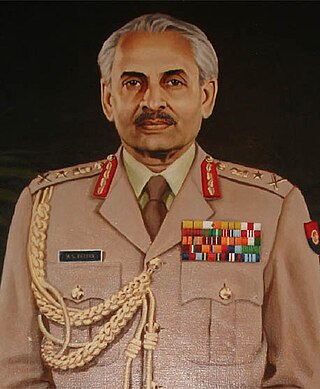
General Arunkumar Shridhar VaidyaPVSM, MVC & Bar, AVSM, ADC was a General Officer in the Indian Army. He served as the 13th Chief of the Army Staff from 1983 to 1986. Following his retirement, he was assassinated by Harjinder Singh Jinda and Sukhdev Singh Sukha in August 1986. This was done in vengeance of Operation Blue Star. General Arun Vaidya commanded this operation.

Subedar Major and Honorary Captain Yogendra Singh Yadav PVC is a retired commissioned officer in the Indian Army, who was awarded the highest Indian wartime gallantry decoration, the Param Vir Chakra, for his actions during the Kargil War. He is the youngest recipient of the Param Vir Chakra to date, having received it at the age of 19.
Colonel Chewang Rinchen MVC & Bar, SM was a highly decorated officer in the Indian Army from the Union territory of Ladakh. He was the youngest ever recipient of the Maha Vir Chakra, the second highest Indian gallantry decoration, for his role in the defence of Ladakh in the First Kashmir War. He received the Maha Vir Chakra for a second time after Indo-Pakistani War of 1971, for his role in the conquest of the Turtuk and Tyakshi, in what came to be known as the Battle of Turtuk. He was one of only six Indian service personnel to have the Maha Vir Chakra twice. He was awarded a Sena Medal for gallantry in the 1962 India-China War. and Mention in dispatches for gallantry in the Indo-Pakistani War of 1965
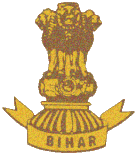
The Bihar Regiment is an Indian Army infantry regiment. It traces its origins back to the British Indian Army. The Bihar Regiment was formed in 1941 by regularising the 11th (Territorial) Battalion, the 19th Hyderabad Regiment, and raising new battalions. The Bihar Regimental Centre (BRC) is located at Danapur Cantonment, Patna, the second oldest cantonment of India. INS Vikramaditya, the Indian Navy's largest ship and one of its two aircraft carriers is affiliated to the Bihar Regiment, Indian Army's highly decorated and battle-hardened unit. The regiment also distinguishes itself by having the highest number of Rashtriya Rifles battalions among all regiments of the Indian Army.

Brigadier Kuldip Singh Chandpuri MVC, VSM was a decorated Indian Army officer. He is known for his leadership in the Battle of Longewala during the Indo-Pakistani War of 1971, for which he was awarded the Maha Vir Chakra, the second highest Indian military decoration, by the Indian government. The 1997 Hindi film Border was based on the battle, with his role played by Sunny Deol. He was a councillor in the Chandigarh Municipal Corporation from 2006 to 2011.

Major Rajesh Singh Adhikari, MVC, was an Indian Army officer who died during the Kargil War. He was posthumously awarded the second highest Indian military honour, the Maha Vir Chakra for bravery on the battlefield.
A Ghatak Platoon, or Ghatak Commandos, is a special operations capable reconnaissance platoon that is present in every infantry battalion in the Indian Army. Ghatak is a Sanskrit word meaning "killer" or "lethal". Their name was given to them by General Bipin Chandra Joshi. They act as shock troops and spearhead assaults ahead of the battalion.
Lieutenant General Zorawar Chand 'Zoru' Bakshi PVSM, MVC, VrC, VSM was a General Officer of the Indian Army, most widely known as one of the commanders of Indo-Pakistani War of 1965. He also has the distinction of being "India's most decorated General".
Lt. Gen. Hanut Singh Rathore, PVSM, MVC was a General Officer in the Indian Army. He was decorated with the Maha Vir Chakra for his role in the Battle of Basantar in the Indo-Pakistani War of 1971.
The Battle of Tiger Hill encompasses the battles fought in and around the peak of Tiger Hill between the Indian Army and Pakistan from the final week of May till second week of June 1999, during the Kargil War. The battle, with the concomitant battle for the adjoining peak of Tololing, culminated in Indian forces capturing Tiger Hill, Kargil.

Lieutenant General Yogesh Kumar Joshi, PVSM, UYSM, AVSM, VrC, SM, ADC is a retired General Officer of the Indian Army. He was the General Officer Commanding-in-Chief Northern Command, assuming office from Lt Gen Ranbir Singh on 1 February 2020. He last served as the Chief of staff of the Northern Command, assuming the office from Lt Gen SK Sharma. Previously, he was the commander of Leh based Fire & Fury Corps. As Army Commander he is credited with spearheading the Indian response to PLA's attempt to alter the status quo on Line of Actual Control (LAC) by use of force. He is the only war decorated Army Commander who has to his credit successes against both Indian adversaries China and Pakistan.
Lieutenant Colonel Ramakrishnan Vishwanathan, VrC was the second-in-command of 18 Grenadiers which was conducting operations on and around Tololing mountain, Drass sector, Kargil, during Operation Vijay. He was posthumously awarded the Vir Chakra for his actions during the Kargil War. A Tripunithura a street near Eroor Pisharikovil Temple is named in his honour.

Captain Neikezhakuo Kengurüse, MVC was an Indian Army officer from Nagaland.
Major General Anant Singh Pathania MVC, MC was a decorated Indian Army general; the first Indian to receive a Military Cross in the Second World War, he was also the first Indian commanding officer of the Gorkha Rifles. During the Sino-Indian War of 1962, he commanded the 4th Infantry Division during a critical stage of the conflict where his leadership was criticised.
Lieutenant-General Joginder Singh Gharaya MVC, KC, VSM was a highly decorated Indian Army general and the only member of the Indian Armed Forces to have won both the Maha Vir Chakra and the Kirti Chakra, the second highest wartime and peacetime Indian decorations.











